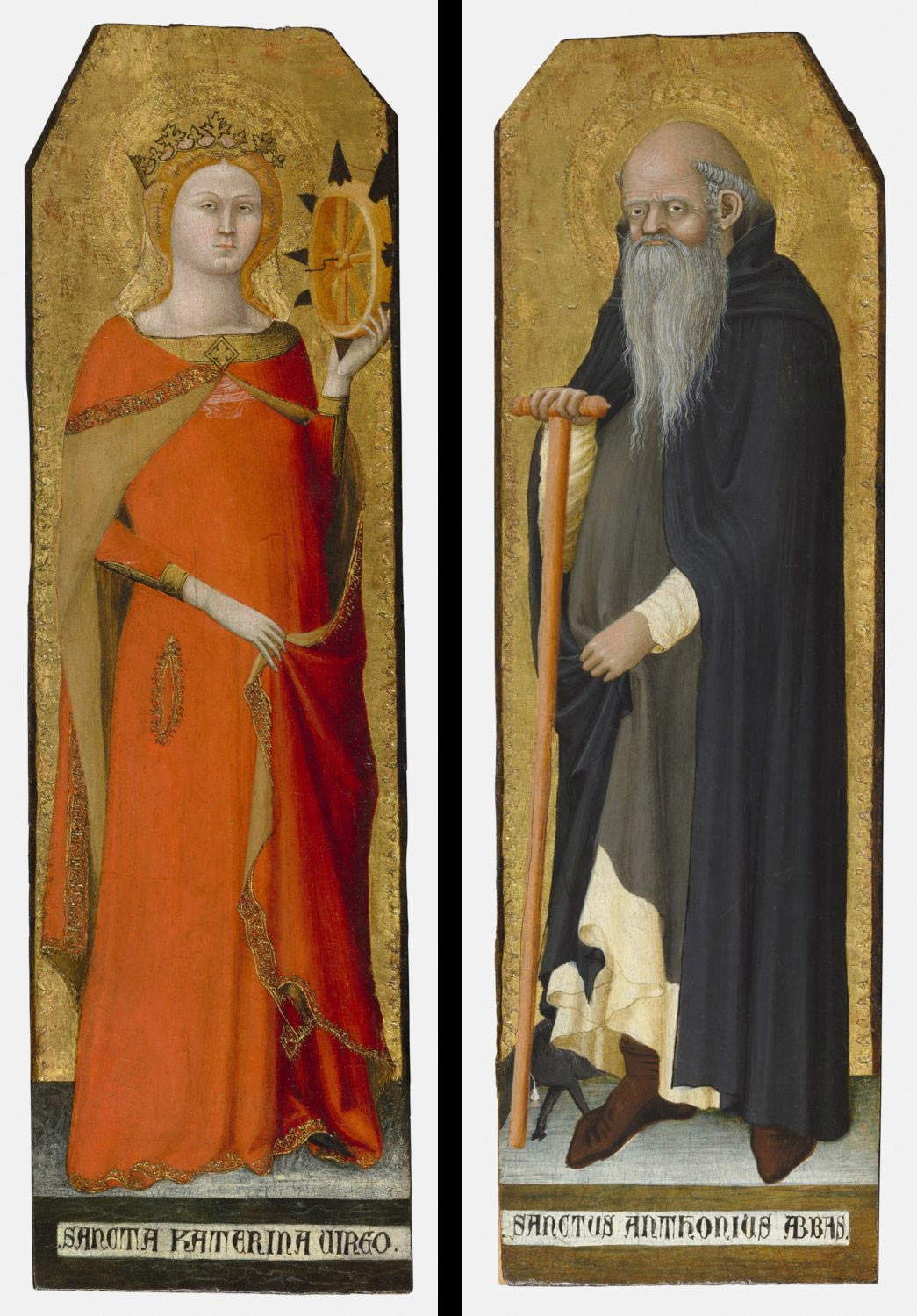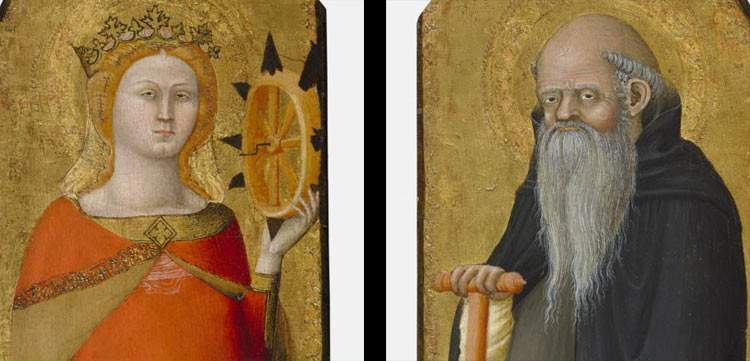The Louvre acquires two important 14th-century plates by Matteo Giovannetti
The Louvre has announced the acquisition of two important panels by Matteo Giovannetti (Viterbo, documented between 1322 and 1369), depicting a Saint Catherine of Alexandria and a Saint Anthony Abbot, which will be allocated to the Pitutra department. This is according to the museum one of the most important acquisitions of 2021. The two panels were executed around 1345 by Matteo Giovannetti, the most important painter in the service of the popes in Avignon after the death of Simone Martini, the great master of the Sienese school who had moved to France and died in Avignon in 1344. Both works enter the national collections through a purchase.
These two panels constitute rare testimonies of the production of Matteo Giovannetti, a painter from Viterbo who established himself as the main creator of the fresco decorations of the Palace of the Popes in Avignon and the Charterhouse of Villeneuve-lès-Avignon. His works constituted a highly original junction between the culture of the Italy of Giotto and Simone Martini, and French culture, establishing himself as a fertile source of inspiration for French and Nordic painters of the late Middle Ages and in a sense paving the way for international Gothic. The St. Catherine and St. Anthony are of particular historical importance to the French national collections: indeed, they are among the earliest remnants of paintings executed on French soil in the 14th century and constitute an important precedent to the celebrated Portrait of King John the Good, which opens the course of French painting at the Louvre.

These works reflect the talent, invention and originality of a great artist, endowed with a very personal language, imbued with naturalism and a sometimes surprising directness: drawing on traditional iconographic codes, the painter offers here an updated and natural image of the two figures, referring to the refinement of the Avignon court, to which some details (costumes, hairstyles, etc.) refer, and developing a new interest in portraiture. Indeed, there is nothing conventional about St. Anthony’s face, and his characterization makes him almost a portrait.
Approximately 64 cm tall by 19.8 cm high, these two panels come from an important triptych painted in Avignon for a wealthy Venetian patron (according to Roberto Longhi it was the “most beautiful triptych painted for Venice in the first half of the fourteenth century”), and which first appeared on the market in 1900 as part of the sale of the collection bequeathed by Count Cernazai to the Archiepiscopal Seminary of Udine. The other panels that were part of the complex are known: of these, the Louvre acquired theAnnouncing Angel and the Virgin Announced in 1996.
The two panels by Matteo Giovannetti remained in storage at the Louvre between 2015 and 2020 at the owner’s behest, so the public was already familiar with them. Now, therefore, they become part of the museum’s collection. The Louvre thus continues its policy of acquiring Italian works of the 14th and 15th centuries: the purchase of Matteo Giovannetti’s two panels follows that of St. John the Baptist by Giovanni di Tommasino Crivelli (2016), theApparition of Christ to the Virgin by Domenico del Ghirlandaio (2019), the Crucifixion by Nicola di Ulisse da Siena (2021), and the Dream of St. Joseph by the Master of the Osservanza (2021).
 |
| The Louvre acquires two important 14th-century plates by Matteo Giovannetti |
Warning: the translation into English of the original Italian article was created using automatic tools. We undertake to review all articles, but we do not guarantee the total absence of inaccuracies in the translation due to the program. You can find the original by clicking on the ITA button. If you find any mistake,please contact us.




























